
Old New Territory Los Angeles
Los Angeles is a city of contrasts, and accordingly, it makes sense to segment the network of bridges over the motorways: Some sections may be of wood construction as "bridge light," while others are made of traditional reinforced concrete; narrower bridge sections may be limited to transportation routes and greening, while others are built out with affordable housing for LA citizens or used for housing projects to reduce the homeless rate.
However, all interconnected bridge sections have one thing in common: they provide a network structure for safe autonomous transport, the transfer of collected rainwater and the collection and distribution of photovoltaically produced electricity.
The Los Angeles Bridges can solve one of the city's most pressing problems: the housing shortage - about 340,000 people could get housing on the LA Bridges
Almost 15 million square meters of living space could be built on the 9.3 million square meters of the Los Angeles Bridges and 340,000 people can be housed there - with around 20 percent of the building space remaining for shops for daily needs, small service providers such as hairdressers, and education and culture, i.e. kindergartens, music schools and much more: a city culture could develop on the Los Angeles Bridges of doing many things by foot and not having to get into the car for every little thing.

As on all bridges, the traditional architecture of the city should be applied to at least half of the bridge buildings in Los Angeles
Los Angeles is home to a variety of beautiful architecture - not just in Beverly Hills: as everywhere else in the world, buildings with traditional architecture are particularly popular, including the famous Californian, colourful wooden houses and the "Spanish" houses typical of Southern California, whose architectural style has a Mediterranean-Mexican flavour.
Homes from earlier eras are closer to the historic center of Los Angeles, Downtown, which is not considered a best neighborhood these days, unlike downtown in most other cities. However, even in neighborhoods around LA Downtown, these traditional homes usually achieve horrendous prices because the people of the city love them.
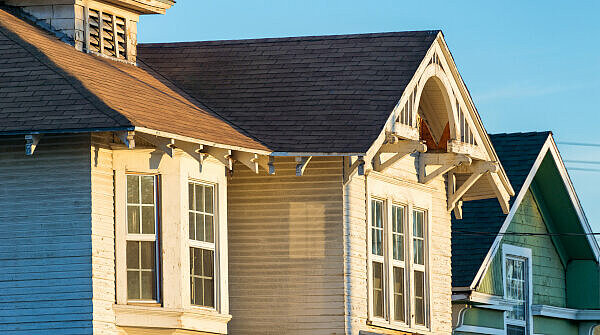
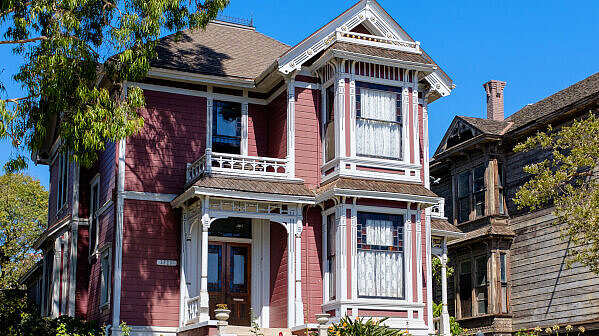
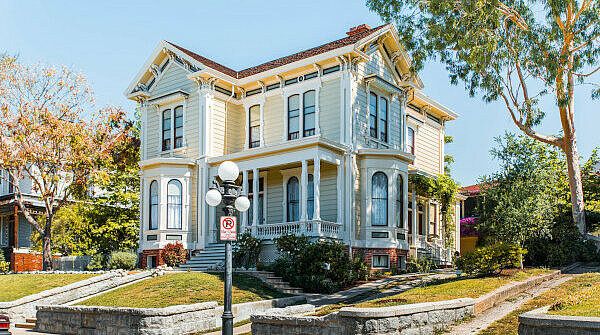

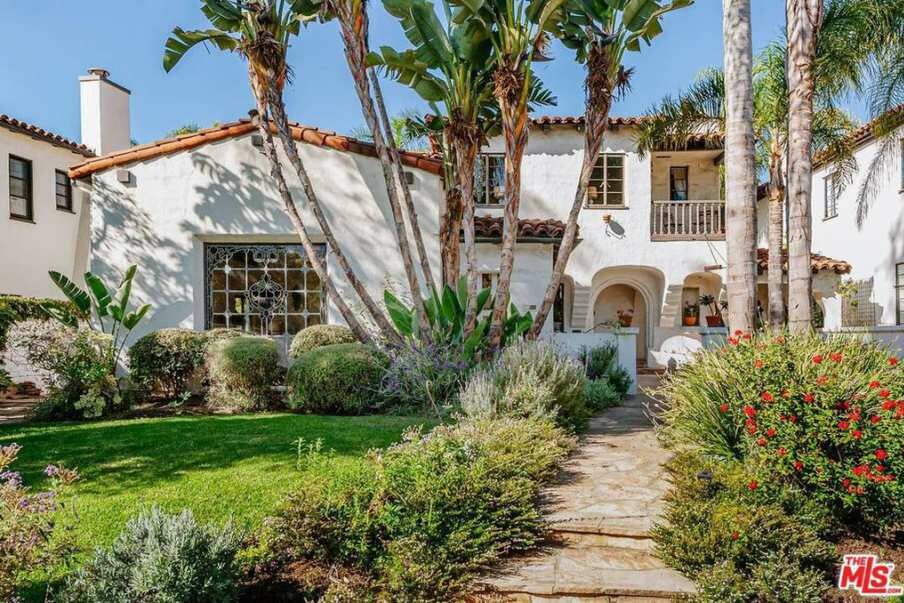
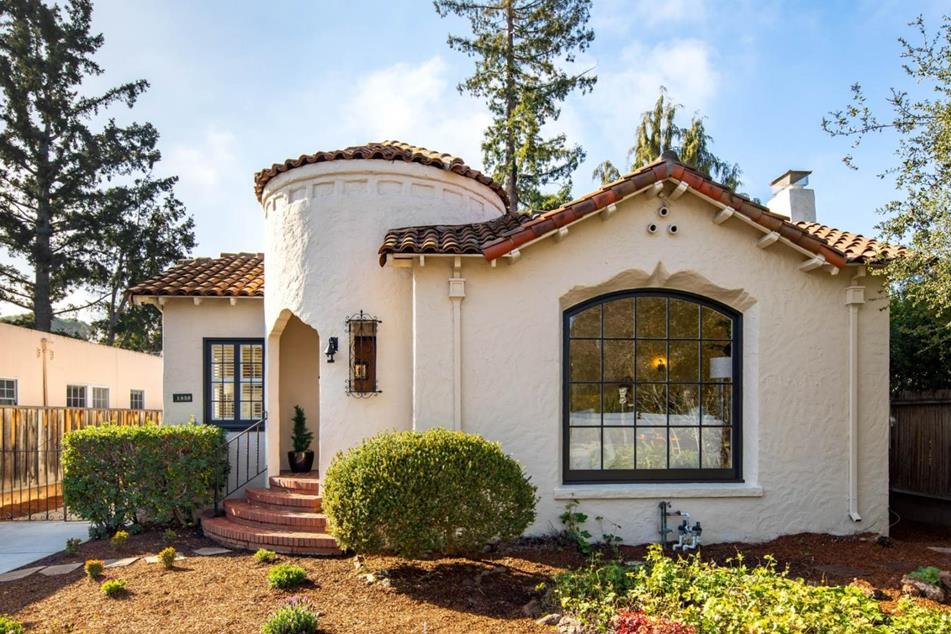
But there's also cool modern architecture in Los Angeles that can be applied to multifamily housing on the Los Angeles Bridges in particular - affordable housing in a neighborhood you can walk in
What will be special about the Los Angeles Bridges is that you won't need a car to get anywhere: Shops, nurseries kindergartens, schools, doctors, music pavilions and hobby pop-ups, service providers like hairdressers or dry cleaners - everything is within walking distance or can be reached with the help of the autonomously driving bridge traffic. In the middle of Los Angeles, a neighborhood is being created on the second level where you can go for a walk - a novelty for the "city of cars".


However, the bridges are not only meant to provide attractive housing for ordinary Los Angeles residents: They can also help solve the urgent problem of the homeless
Los Angeles has over 70,000 homeless people - and the number is rising. The nationwide motto "housing first" cannot be implemented across the board due to a lack of housing and high costs
Homeless people exist in many cities in the US, but Los Angeles is particularly hard hit. For years, the state has invested heavily in creating housing for the homeless, but the number is growing faster than the available space. The main problem is no longer only the lack of a roof over their heads, but the lack of therapeutic and social help for reintegration. The situation is also burdensome for the population of LA, and economically relevant sectors such as tourism also suffer.
The homeless can be found almost everywhere in Los Angeles City, but more so in LA Downtown and the surrounding neighborhoods. They even pitch their tents in front of government buildings.

Mass shelters are cheaper but threatening to the homeless and also lead to ghettoisation
In homeless shelters all over the world, homeless people usually fear the unsupervised hours of the night, as this is when the risk of being robbed, raped or otherwise injured is highest. The need for safety, but also for privacy, leads many to return to the streets - which, given the climatic conditions in Los Angeles, is also more bearable than in northern or central Europe. Accordingly, the number of homeless people is increasing.
Therefore, affordable small housing units must be created that are lockable and thus offer security and privacy. Similar to the homeless quarters on the Frankfurt Bridges, it is important that there is no staircase where one can be attacked when stepping out of one‘s sleeping room, but that one can step directly into the open from each room. This can be realized in multi-storey buildings, for example, with a multitude of external staircases, reminiscent of Soho Cast Iron District in New York.

Exterior staircases for self-contained small units increase safety and privacy - architecturally appealing designs can also create a "Little Soho" in Los Angeles that becomes a tourist attraction
To ensure that homeless people are not relegated to a ghetto, the buildings that hold countless mini-apartments should be designed to be quite attractive. This also favours a possible financing concept: investors willing to build these units receive the "ground" (i.e. bridge space) for free and only have to make the building available to the city free of charge for homeless people for 30 years. After that, it reverts back to the investors: the small units can be combined and redeveloped to create the highest quality luxury apartments - an attractive long-term investment. The premise here is that 30 years (one generation) is enough to allow the homeless housed there to reintegrate into society.

Similar to the Viennese VinciVillage, a residential concept could be realized in LA that offers self-contained small 12-square-meter units in which all functional areas of daily life are available.
Twelve square meters is not much, but it corresponds to the size of a caravan, which can also accommodate all the functions for everyday life: A mini shower room, cooking facilities with fridge, a place to sleep and seating for up to 4 people with TV.
To house 70,000 people, such a concept would require 840,000 square meters of living space - which is a lot, but doable. The biggest problem is the land area for such a development, and that's what the Los Angeles Bridges can provide: Of the 15 million square feet of building space that can be built on the LA Bridges, about 1 million would have to be set aside for housing homeless people - at least for the first 30 years after the buildings are completed.
It is important that all buildings are designed in a humane and varied way and that they are not all located in one place, but are mixed with buildings of other uses: The aim is not to create a mass ghetto, but a particularly interesting and appealingly designed neighbourhood.

Homeless people vary in their ability to reintegrate, especially according to their level of drug dependence
There are of course many homeless shelters in Los Angeles, but the supervisory staff is scarce and privacy is not given at all. The people who end up on the streets need not only shelter, but also therapy and a perspective to get out of their predicament one day - that means: they also need the chance to work, so they don't have to rely on prostitution, stealing or dealing.
However, the main problem for people who have gone off the rails is often that they are unable to hold down a regular job. They often already do not manage to apply for jobs, nor can they work regular hours because they are addicted to drugs or have mental health problems.
Here, too, the bridge concept offers a solution: Greened bridges need to be maintained (even though they require comparatively little effort due to underground irrigation): At the bridges' gardening crews, people can sign up at certain times of the day to help out for two, four or six hours. There are no entry formalities and one does not commit oneself beyond that.
After completing the work, you will be paid the standard minimum wage per hour (currently US$15.50 in California) in cash - without any formalities, paperwork or other hurdles.
This concept aims to keep people from stealing, prostitution etc. for simply covering their daily living costs.
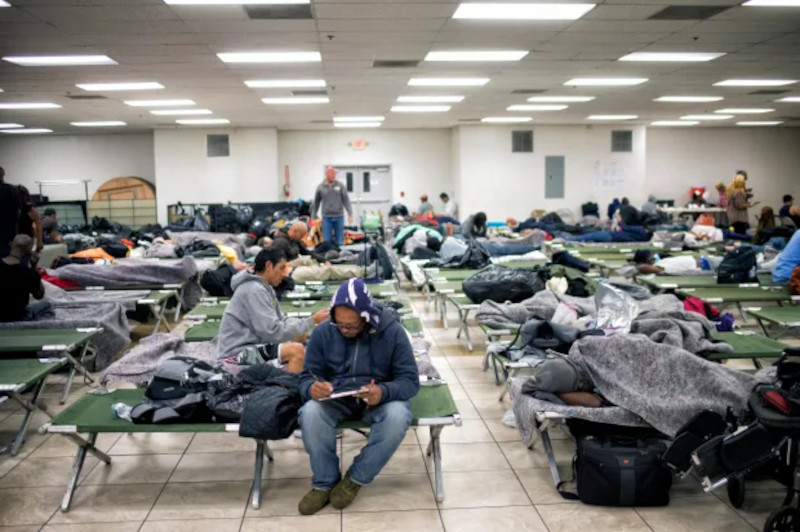
In order to reintegrate permanently homeless people into society and provide them with a dignified environment, heterogeneous neighbourhood structures must be ensured and ghettoisation avoided
Humane homeless shelters should alternate with buildings where social and therapeutic institutions are given space for free by the state: drug counseling, church institutions, non-profit aid societies, social workers and street workers, soup kitchens, veterans' aid facilities, etc.
The second large group, which is also provided with extremely cheap space and also housing in these colourful, architecturally attractive bridge sections, are artists: they often have less fear of contact with the homeless and are often more empathetic than the rest of society, such as the graffiti artist Skid Robot, who in Los Angeles paints for the homeless what they do not have and what they dream of.
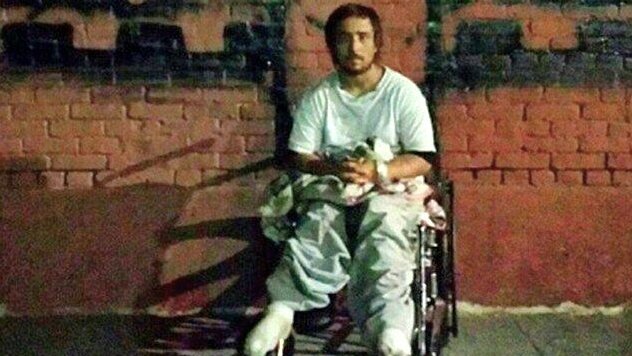




On the LA Bridges, artists should be given nice studios at marginal rents to develop their art in the Scene neighborhoods, which include homeless and housing

A suitable bridge arm for a trendy neighborhood may be the section over Interstate 10 that separates the Fashion District from the Historic District
To the right and left of Interstate 10 are mostly commercial units. Thus, this is an area that is revitalized and centrally located without already being considered a high quality living area. With the construction of the artfully designed and landscaped LA Bridges, the streets to the right andl left can be up-graded over the years. And by attracting a music and artist scene, mixing with housing for homeless people can be unobtrusive and inclusive. The intensive promotion of social and therapeutic offers on this section of the bridge leads to formerly homeless people being reintegrated more easily, but also to other citizens and tourists coming to experience the wide range of offers on this bridge section.

In 2028, Los Angeles will host the Olympic Games: By then, the city could alleviate its homeless problem
The bridge section over Interstate 10 covers approx. 280,000 square meters - a development of only 50% of the area with on average four-story buildings can create about 560,000 square meters of building space. If one sets 15%-20% for social institutions, artists, small businesses and service providers, etc., there is still enough living space for more than 35,000 homeless people.
While this would not completely solve the problem, it would significantly alleviate it by getting more than half of the homeless people off the streets. Adding the south arm, with a footprint of 290,000 m2 of building space , would solve the homeless problem. However, the construction effort is probably only feasible for one of the two arms by 2028.
In any case, what is important in finding solutions for the homeless is that they are not stigmatized and ghettoized, but that they are integrated as much as possible culturally, in terms of living space, work and generally in their daily lives, and not „chased away". In a city like LA, the most promising approach is to "stage" their neighborhoods.

On the Los Angeles Bridges, all everyday necessities should be within walking distance: a paradise for walkers and cyclists - supported by autonomously driving traffic to the right and left at the edges of the bridge surface
Even though cars dominate everyday life in most cities in the US, there are also beautiful streets to stroll along, which are best explored on foot and by bike. With the mild Mediterranean weather and well-planned underground irrigation, green oases on the LA Bridges can invite you to linger in between.
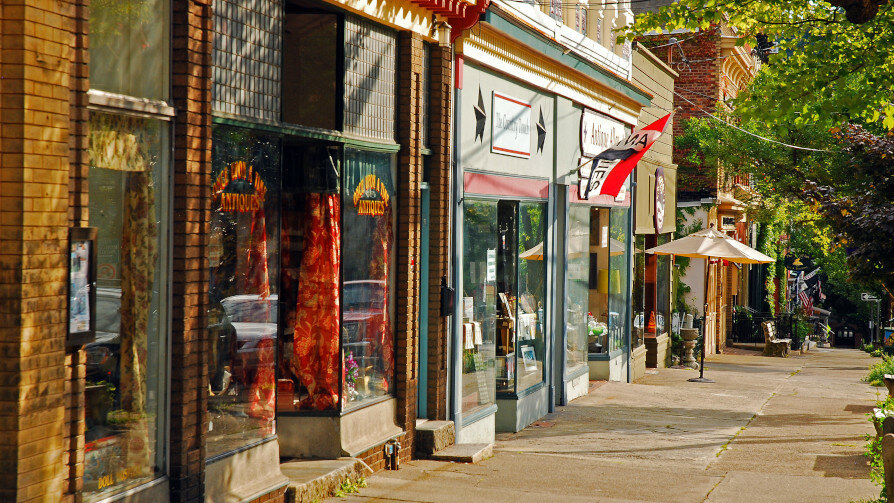
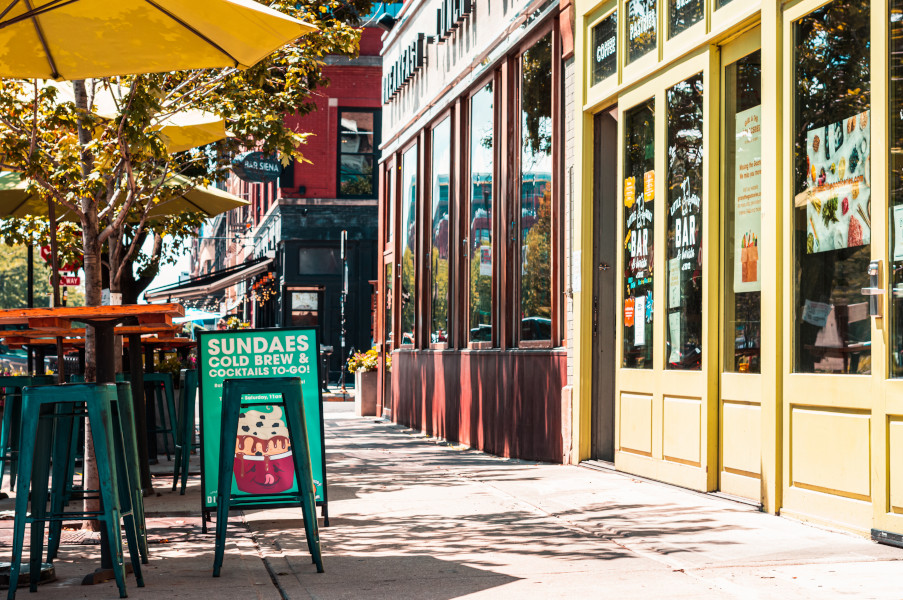
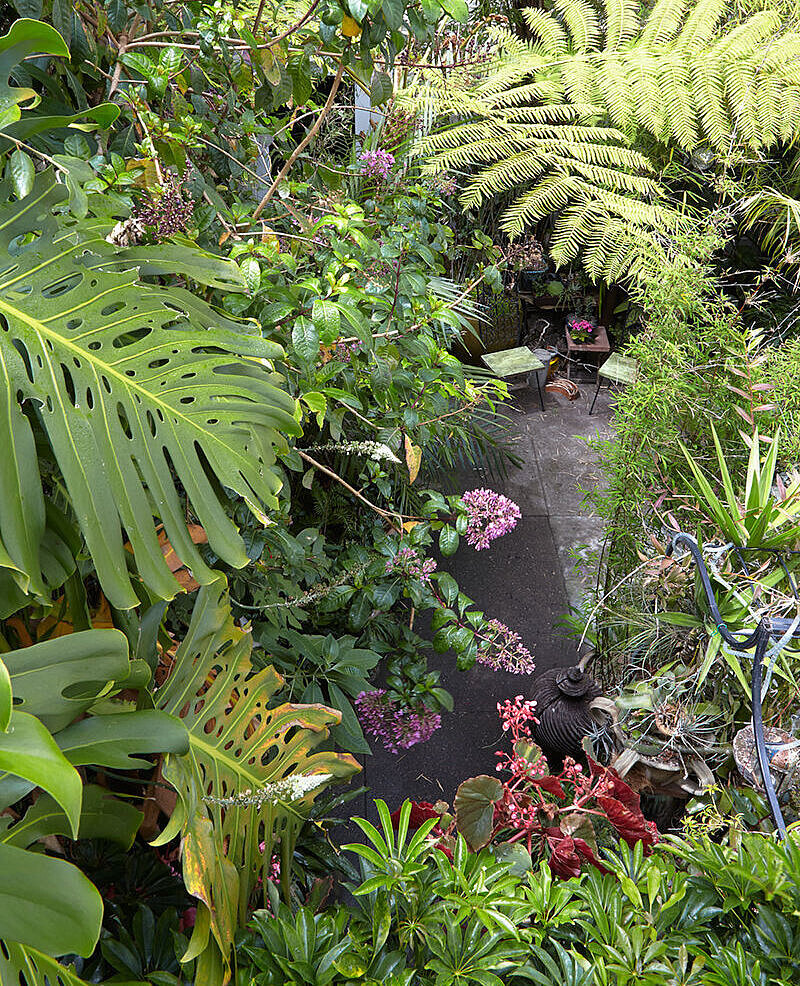
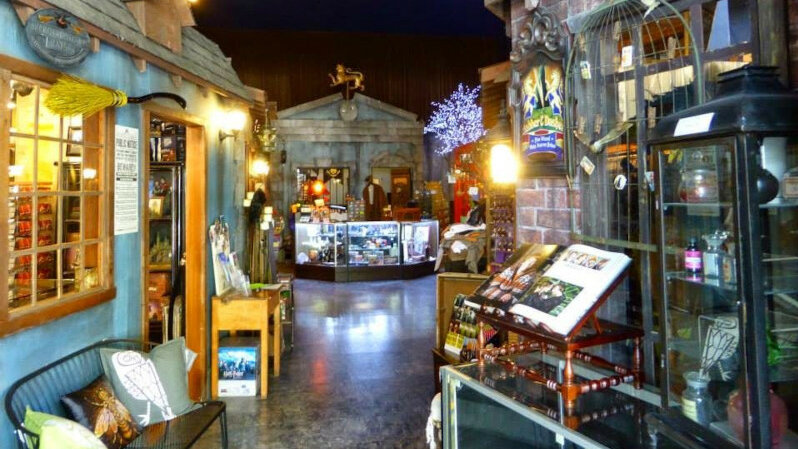

However, cars can only be reduced in Los Angeles if there are other alternative transportation options in addition to Metro and buses
As with the Frankfurt Bridges, there are protected lanes on the LA Bridges on the right and left for autonomous driving traffic, supplemented by bicycle lanes.

Only technically advanced e-cars or hydrogen-powered vehicles drive on the LA Bridges - many of them in the popular retro look of models from the region
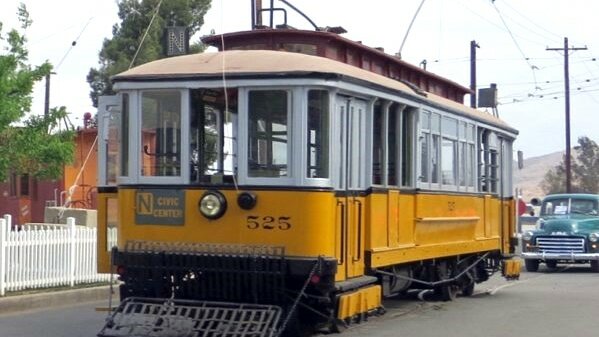
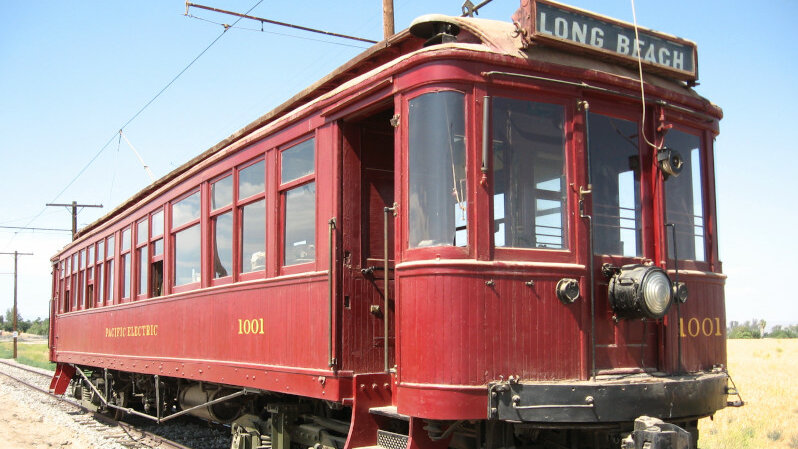

Only technically advanced e-cars or hydrogen-powered vehicles drive on the LA Bridges - many of them in the popular retro look of models from the region
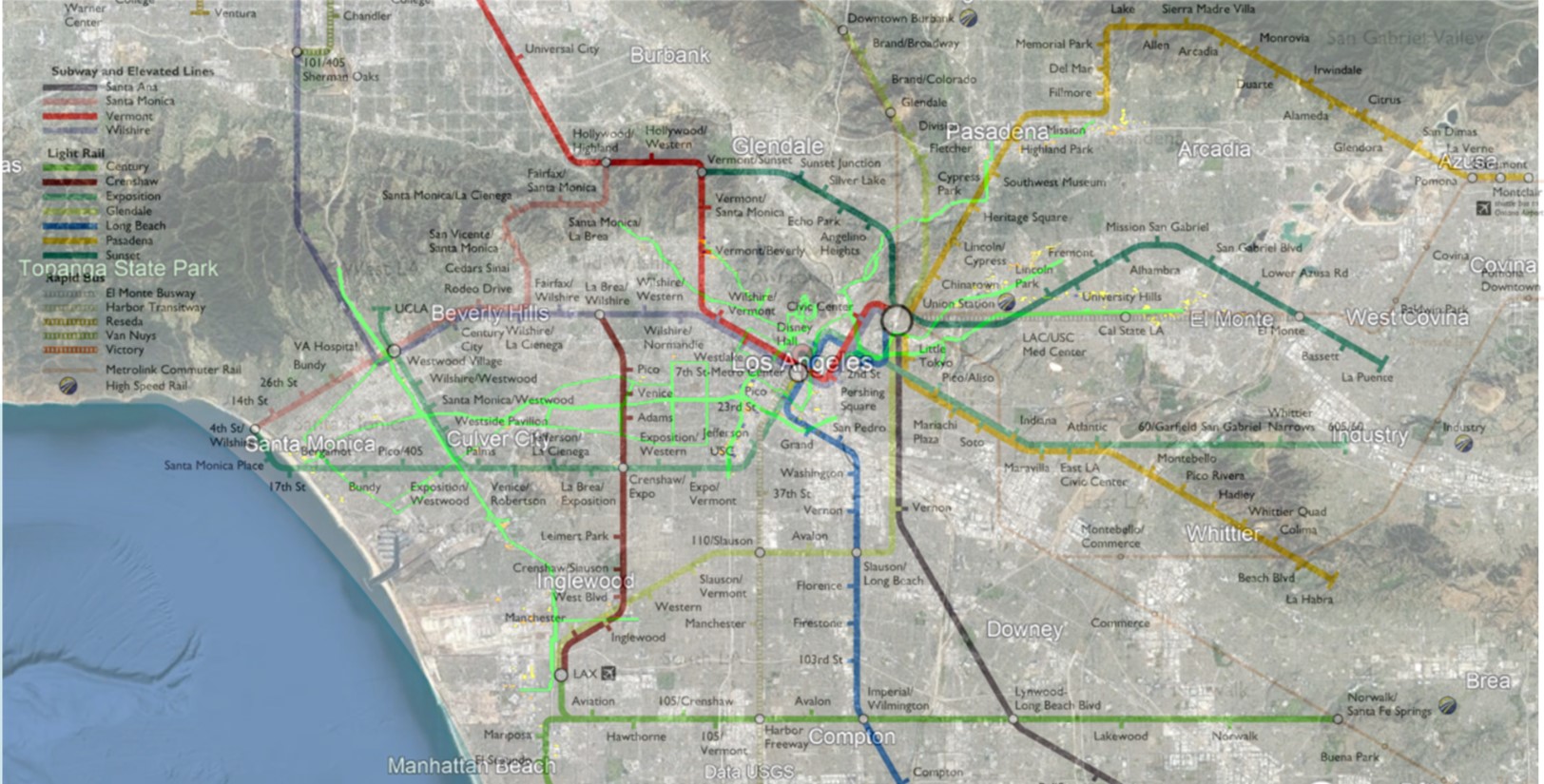
Los Angeles is the city of cars - accordingly, the cars in the autonomous driving fleet should also include retro models of American cult cars
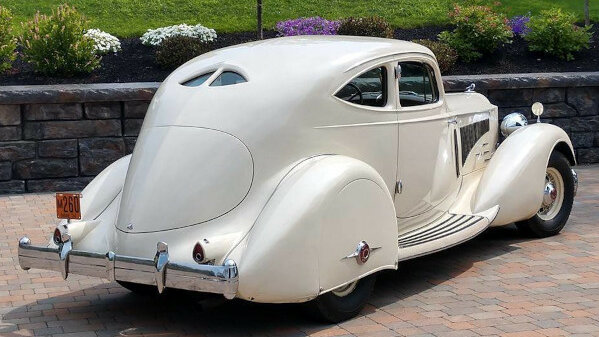





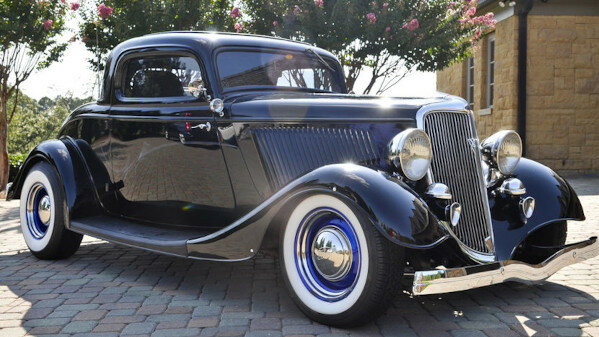

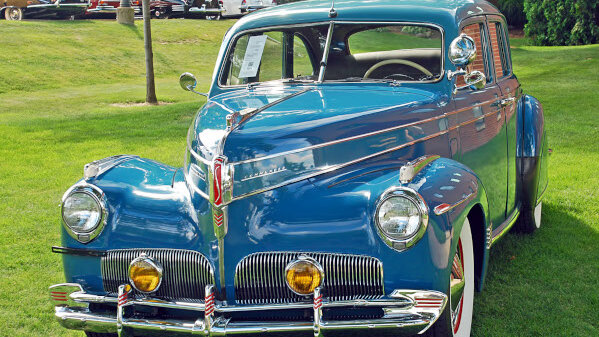
Classic cars put you in a good mood and put a smile on most people's faces. But only very few can afford such a gem - especially since the technology and the fuel consumption of these cars are unfortunately not sustainable

On the LA bridges, on the other hand, anyone can call such a car with their bridge app: If you not only want to ride the trams and buses on the bridges, but also have cars for individual trips included in your monthly pass, it costs about 50% more, but you also get the pleasure of riding in a special car of your choice in return.
And the best thing is: In accordance with the modular vehicle concept of the Frankfurt Bridges, all classic cars can be equipped with highly modern electric motors, powered by electricity from the LA Bridges’ photovoltaics.
The central control system of the LA Bridges ensures accident-free driving
Since there are virtually no accidents on purely autonomous routes, which are protected by railings or planting, the acquisition of these vehicles is worthwhile for the operator of the bridge routes: Well maintained, the bodywork of the vehicles can last 100 years or more, and the technology can be replaced on a modular basis as needed.
Soiling or damage can be detected by sensor systems after the end of the journey, or even when the vehicles undergo short cleaning in maintenance loops, so that the interior of the vehicles should also remain comparatively clean.

Not only the particularly appealing architecture makes the construction of the bridges a lucrative investment, but also the extraordinary traffic fleet
The vehicle fleet can be segmented according to target groups: school buses for children, vehicles with spacious interiors for mothers with prams or also travellers with suitcases on the way to the airport etc. serve the needs of various groups
Every citizen can use his or her bridge app to submit a ride request to the central system, which then sends the next possible vehicle to the respective station. If you have entered on your app that you have a baby or toddler, the system will preferentially send vehicles that have plenty of room for a stroller next to the seats. If schoolchildren go to school in the morning, school buses will automatically be sent to them, since it is a self-learning AI-system. And people with a registered disability are given priority by the central system, so that they have on average at least 25% less waiting time.
To ensure that homeless people on low incomes have a transportation option, there are also free vehicles that stop at separate stations that can be accessed without a bridge app. The free lanes can have an open design so that they can pass through a car wash on a regular basis: If they are made entirely of wood, inside and out, and everything, including floors and seats, is coated with boat paint, they can be rinsed regularly so that even the free vehicles are always clean and hygienic.


Vehicles that last 100 years or more are sustainable - if they are built in parts from renewable raw materials, they have a particularly good CO2 balance.
Such American old-timers can also be part of the autonomously driving fleet, as the risk of damage or fire caused by accidents is close to zero due to the central control system.
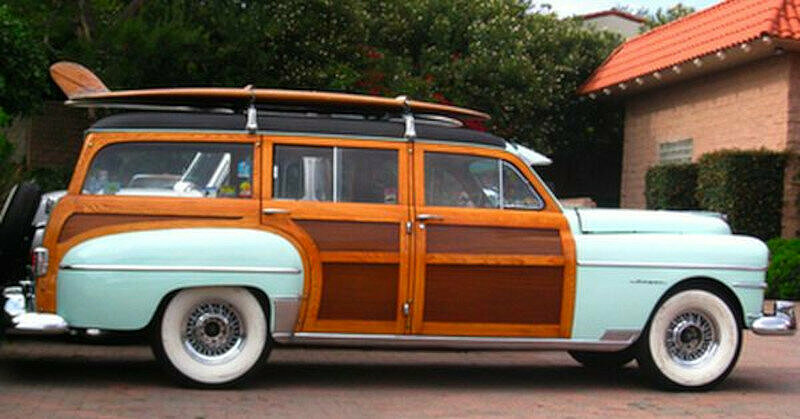

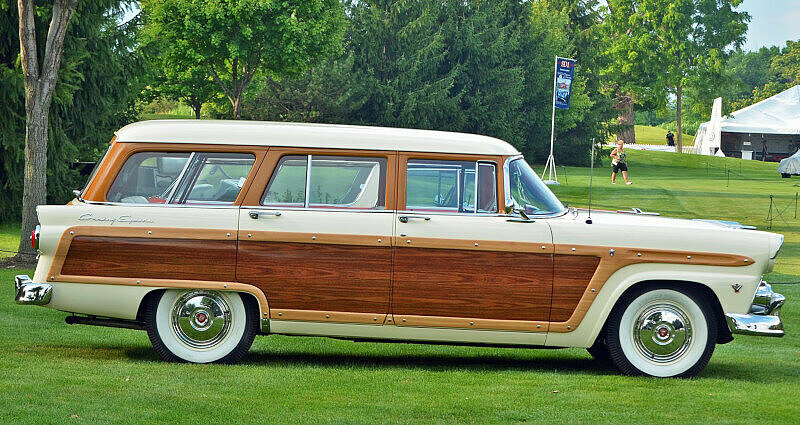

Building with wood is sustainable, anyway - and in California, building with wood has a long tradition: especially houses
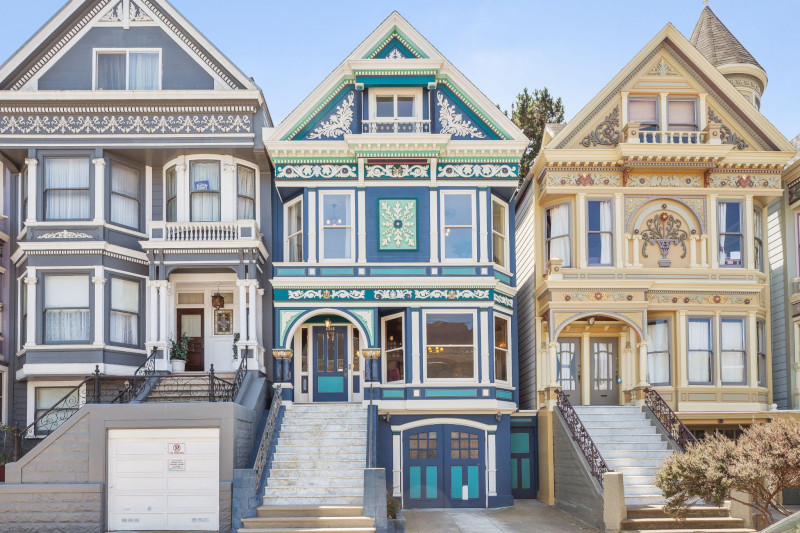



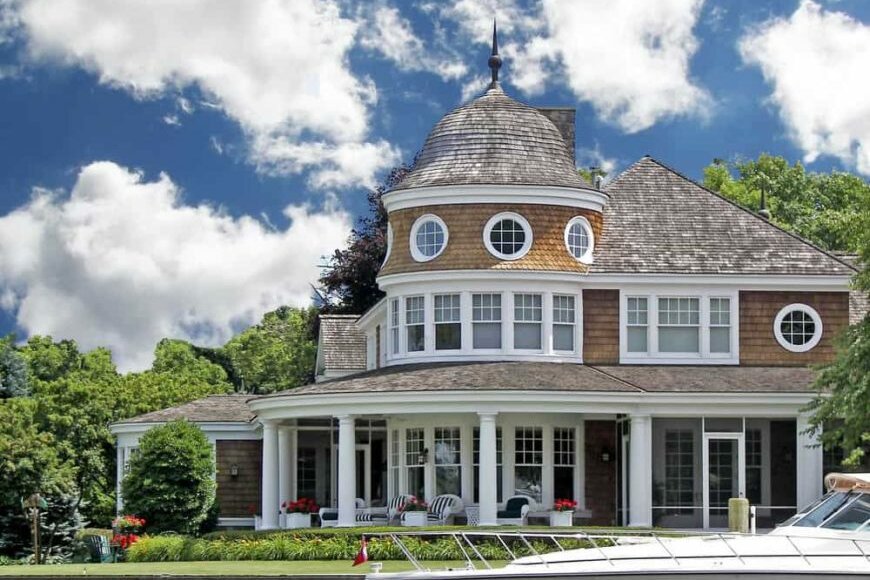

In Los Angeles, building with wood is also a very attractive option because the city is earthquake-prone. Building with wood as a renewable raw material is now also possible for high-rise buildings and offers a sustainable alternative to concrete.



In addition, California has a substantial sustainable timber industry that lacks only wood processing facilities and skilled labor
The tallest wooden skyscraper in Norway required 2,600m3 of wood, a small amount for a state like California: The forestry industries there turned over about 3.5 Mio m3 of wood in 2016, 13% of which came from trees that were already dead. If these are not felled, this increases the risk of fire - regular removal actually makes sense to reduce the risk of forest fires, especially if two new trees can be planted for every one felled.

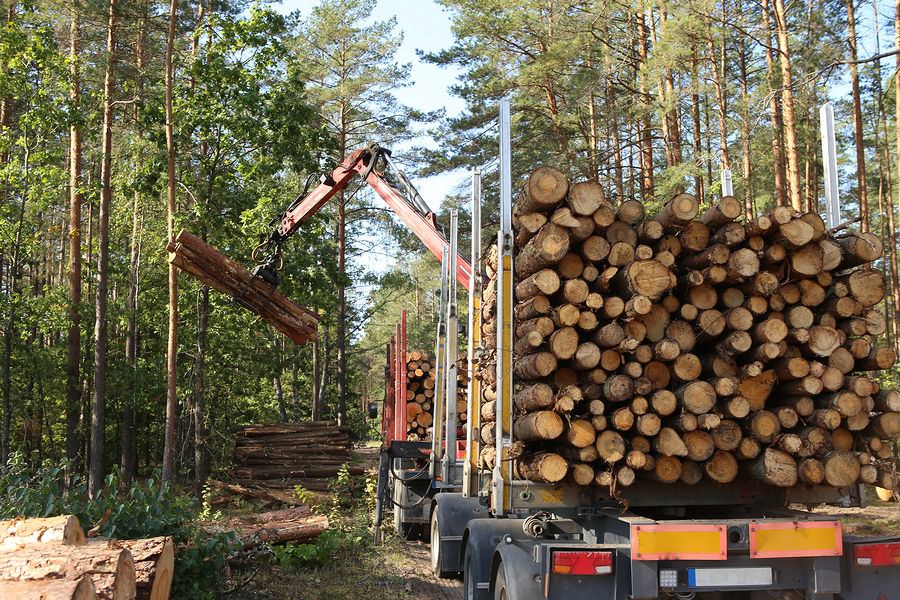
With the Los Angeles Bridges as a continuous bulk buyer for years, it is worthwhile to rebuild the appropriate operations and train the necessary personnel
Another application for wood as a renewable construction resource, could be parts of the bridge itself, in addition to buildings and vehicles: The thinner arms of the LA bridge network are intended to provide access to neighboring neighborhoods: They function as a way of transport, only, without having buildings on them. These thinner arms of the LA Bridges could be constructed in timber, as there is no room for buildings on them anyway.
However, a separate small transport system would be necessary for these sections: This is because even if the bridge vehicles are lightweight, they would still be too heavy for these wooden bridges. Transport on these sections would therefore not be carried out by the large fleet of bridge vehicles, but by feeder vehicles that are small and light and more like velo taxis or the futuristic vehicles from Singapore's WOHA vision.
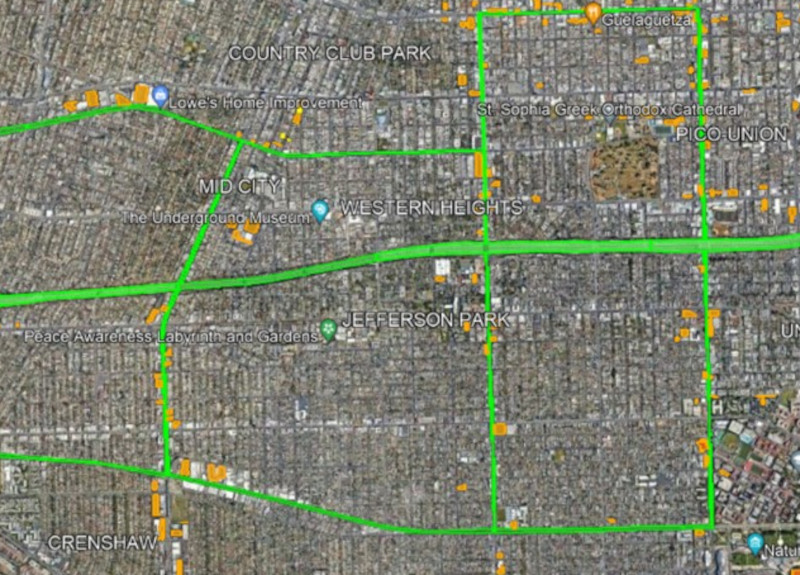


The system of feeder arms at the Los Angeles Bridges can be expanded to include additional routes that serve recreational activities, strolling, or even walking certain routes safely after dark
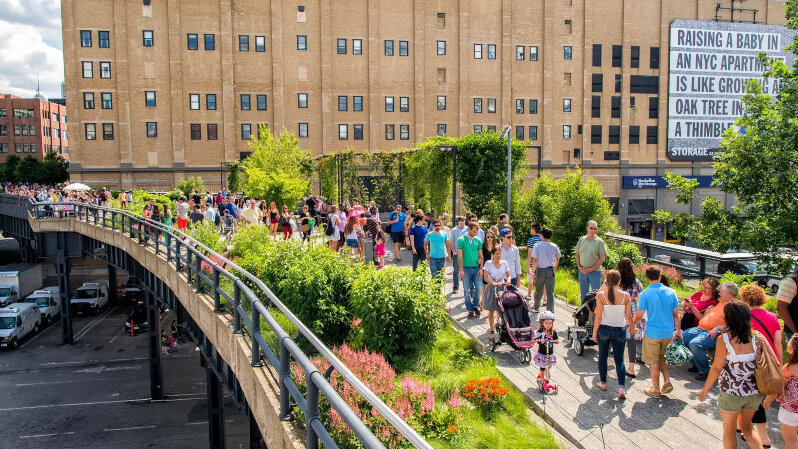

Where the thinner arms of the LA Bridges pass intersections, they can be extended to create playgrounds or dog meadows, for example, or small cafes, music pavilions, or hobby pop-ups etc. – i.e. very small buildings that can be built with light weight

No matter whether narrow or wide: What is important, as everywhere else in the world, is that the bridges do not fall victim to trees along the roads, but that construction takes place around them
The recesses for the trees create very narrow bridge areas at some points, where there is only room for the roadways and a central walkway - but at the same time this creates a kind of „treetop walkway“ when walkers or passengers are at eye level with the treetops.

At the motorway interchanges, there is the option of bypassing the multi-storey superimposed highways: It would be possible to build over them (and thus gain more space for buildings), but the expense must be carefully weighed against the benefit in the course of planning.


Most of the LA Bridges are made of conventional reinforced concrete, the cement of which, however, should be produced with green energy of the LA Energy Bands
Los Angeles has excellent conditions for the operation of photovoltaic systems. In addition, the freeway network that crisscrosses Los Angeles is extensive and very wide, making it the optimal infrastructure for Energy Bands.

Energy Bands do not have to be set up along the entire length of the motorway, but can also left out, wherever the view on vegetation or beautiful landscapes on the right and left are potentially being disturbed
However, like everywhere else in the world, there are also decidedly ugly stretches of freeway in Los Angeles that are not a pleasant sight on one or both sides - where Energy-Bands can be installed without detracting from the motorist's driving experience.

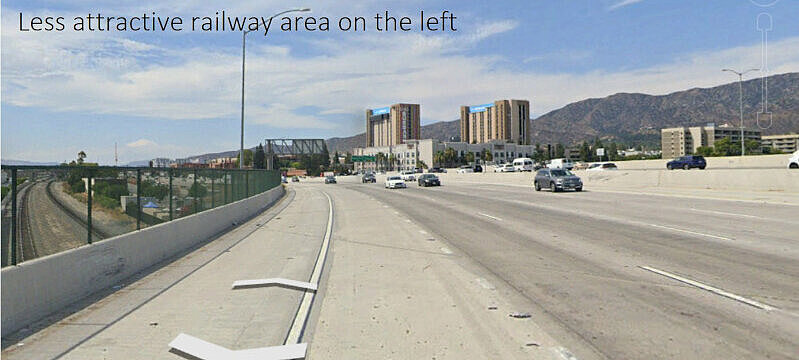


Most of the LA Bridges are made of conventional reinforced concrete, the cement of which, however, is to be produced with green energy from the California Energy Bands: These can produce a total of 3.2 TWh p.a.
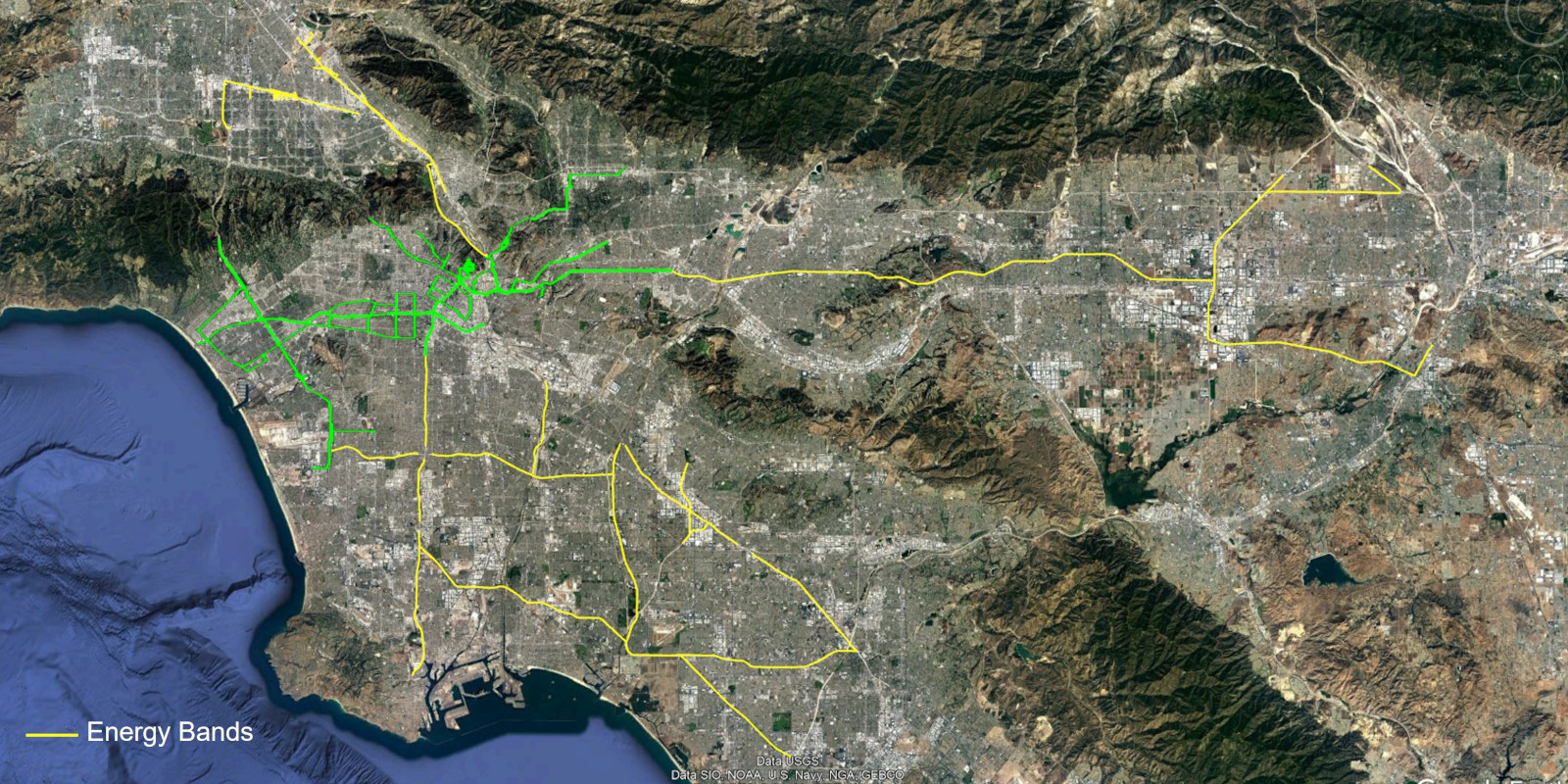
Energy Bands can produce around 1.7 TWh themselves in the north and east, and they can collect further 1.6 TWh of photovoltaic energy from the car parks to their right and left: Thus, they can run towards the cement factories in the North and East and supply them with significant amounts of green energy
Even though the high temperatures for cement production today are still achieved by burning fossil fuels, it is possible in principle to achieve the same temperatures with the aid of high-current furnaces.
Since Energy Bands are extremely easy to build, a network of Energy Bands can be created during the planning of the LA bridges, which then already supplies the energy for the concrete and cement industry during construction.

South of LA, the California Energy Bands, along with the parking lots next to them, produce about 2.5 TWh p.a.: These could lead to a desalination plant and a hydrogen storage field
Northwest of the Seal Beach Wildlife Sanctuary are approximately 11 square kilometers of undeveloped land that could be used to install underground facilities powered by the Energy Bands:
An underground desalination plant could desalinate about 500 million cubic meters of water per year with the 1.26 TWh of the supplying Energy Bands.
The remaining 0.9 TWh could be used to fill hydrogen tanks with the help of underground electrolysers and thus become a storage facility for renewable energies which could supply 300,000 people annually with electricity.

With the desalination plant, however, it would have to be ensured that the seawater is gently absorbed 260 km away from the coast and that, above all, the resulting brine is disposed of just as far away in deep waters
The cost of two such pipelines is likely to be around 400 million US dollars - but this could also supply 7.5 million people in Los Angeles County with drinking water each year or restore dried-up areas of land to their natural state: The drought in California not only affects the people, but also massively damages the native flora and fauna. Considering this, 400 million US dollars should be worth the investment.

Los Angeles, like all of California, suffers from drought and wildfires as traditional springs yield less water each year
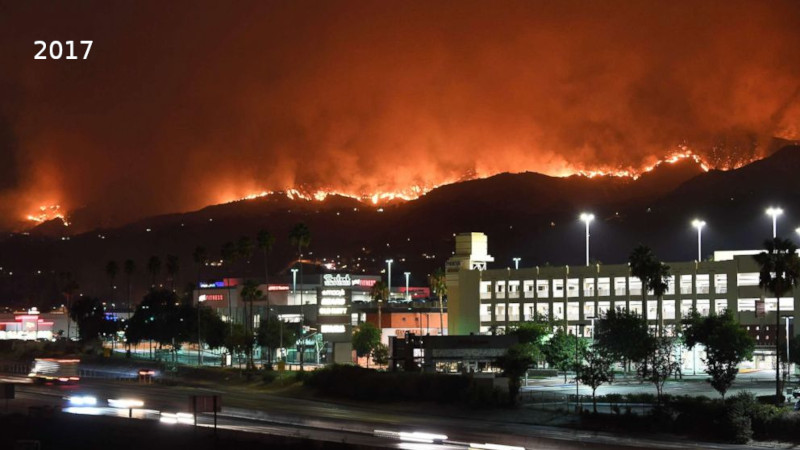




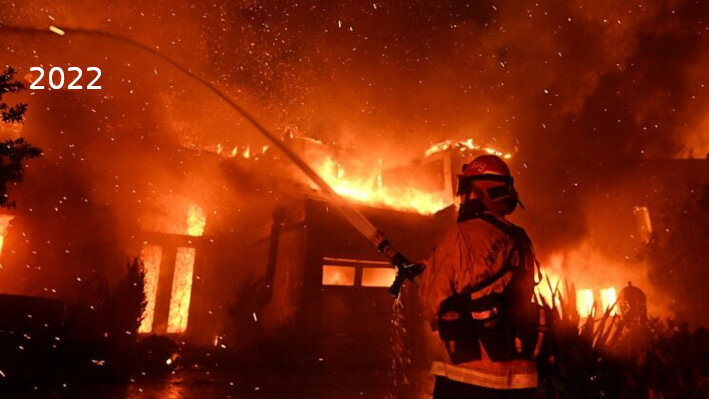
If millions of cubic metres of seawater can be desalinated with the help of photovoltaic Energy Bands, there will no longer be a need to rely so heavily on nature's freshwater reserves for the supply of drinking water or the irrigation of gardens: More water is left for the regeneration of nature, both the natural spring water as well as the additional desalinated seawater.
Los Angeles has massively increased its share of renewable energy in recent years - but there is still considerable potential, especially if e-cars are to replace conventional cars

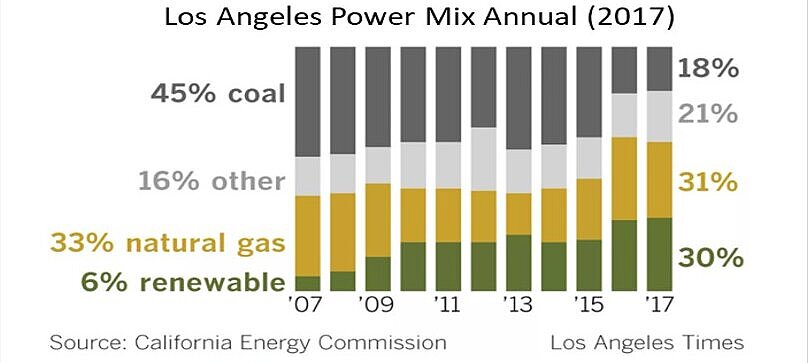
After all, 551 million US gallons of gasoline, or over 2 billion liters, will have to be replaced with renewable energy in the future.
By 2035, Los Angeles wants to convert the majority of its vehicles to e-vehicles. Given the large number of cars and car trips in Los Angeles, it makes sense to generate photovoltaic electricity directly where the e-vehicles are parked: on the millions of square meters of parking space spread throughout the city. The vehicles can "fill up" with electricity whenever they park there, and thus also serve as storage for energy surpluses.

It doesn't make sense to generate electricity centrally somewhere and then send it to e-charging stations where cars have to drive to and wait a comparatively long time for their "full tank" of electricity. It's much more practical to have electricity generated wherever cars are parked around, anyway: Over 9 million square meters of parking along the Los Angeles Bridges could generate 3 TWh of electricity per year, once they are covered with photovoltaic-canopies. The current power grid is not designed to collect or redistribute these amounts of electricity: With the LA Bridges, however, a "bypass" can be created through which additional electricity is routed, both to other consumers to the right and left of the bridges, and to storage locations.

Parking lot canopies, like bridge construction, must be considerate of existing trees: Parking lots with dense rows of trees should not be covered with PV-canopies
Some parking areas need to be carefully segregated: There are sections that are planted with trees and therefore must be left out; and in the same parking place there might be areas where there are no trees and which can be covered with photovoltaics.

Canopy modules should be developed that can be assembled to create PV canopies around existing trees in parking lots.
Once such a "construction kit" is on the market, one can buy the appropriate modules depending on the tree stock and have them assembled.
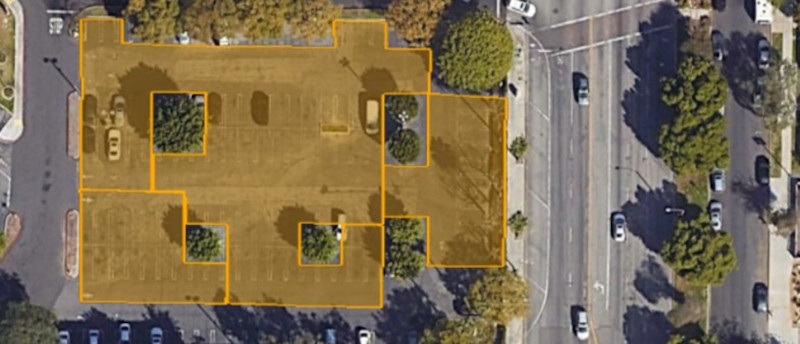
Some parking lots in LA are already equipped with photovoltaic roofing: But the potential is far from being exhausted
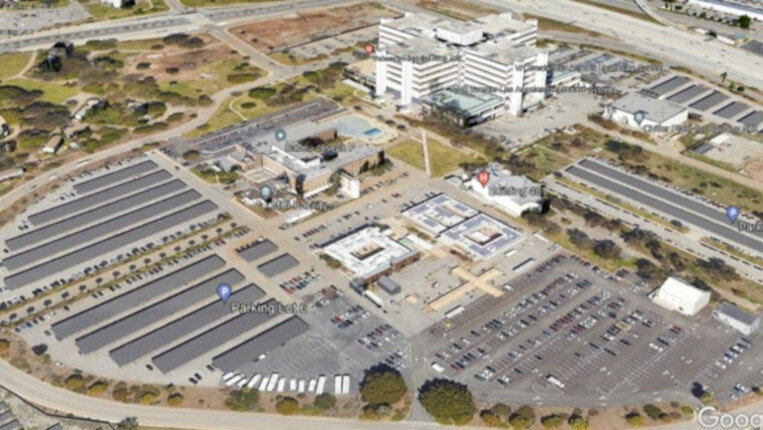
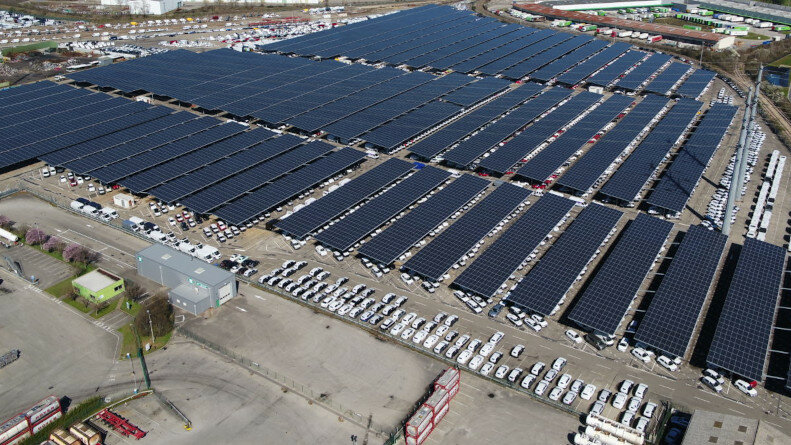
Some suppliers in Europe have already brought PV roofing onto the market, which also covers the traffic routes between the parking strips



This approach not only leads to significantly more PV area and significantly higher "power harvest" on the same area, but also protects the traffic routes and people moving there - only access routes for the fire department must remain free between the roofs


The "E-filling system" can be further expanded: In addition to the 9 million square meters of parking space on the ground, another half million square meters of parking space on roofs along the bridge can be provided with PV canopies
On the parking decks, too, the principle makes sense of producing electricity where it will - at least in the future - also be consumed or stored in the batteries of the e-cars. With the roofing of the 500,000 square meters, another 200 GWh of electricity can be generated.
Structurally, however, roofing on parking decks is much more challenging, as the uprights for the roofing can be attached to the perimeter wall at the edge of the roof, but have to be anchored towards the middle of the roof in an area where you have to go through the roof cladding in many cases. However, it is worth developing solutions for this too, as the e-vehicles of the future will then not only be able to charge themselves on roofs, but also be shaded in the heat.

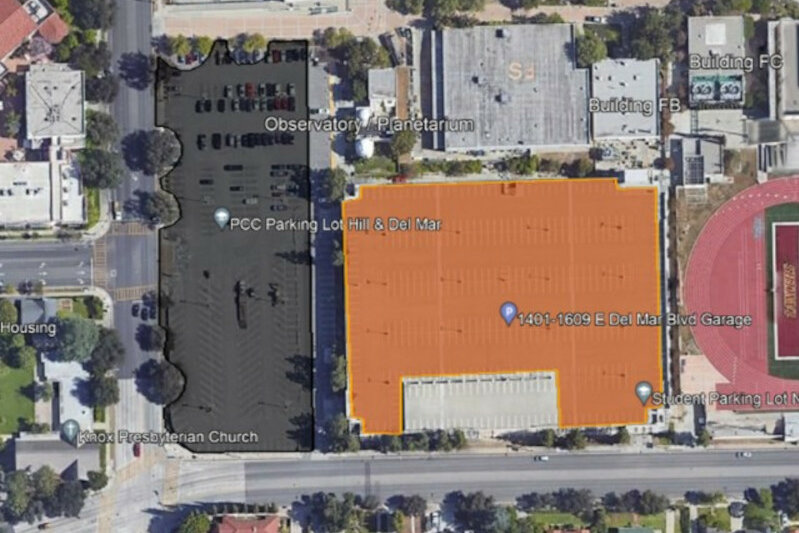
In California, covering dark asphalted parking lots with black photovoltaics is better in terms of the albedo effect than covering bright desert surfaces with black PV modules
Surfaces that were already black do not heat up significantly more with PV over them than before.

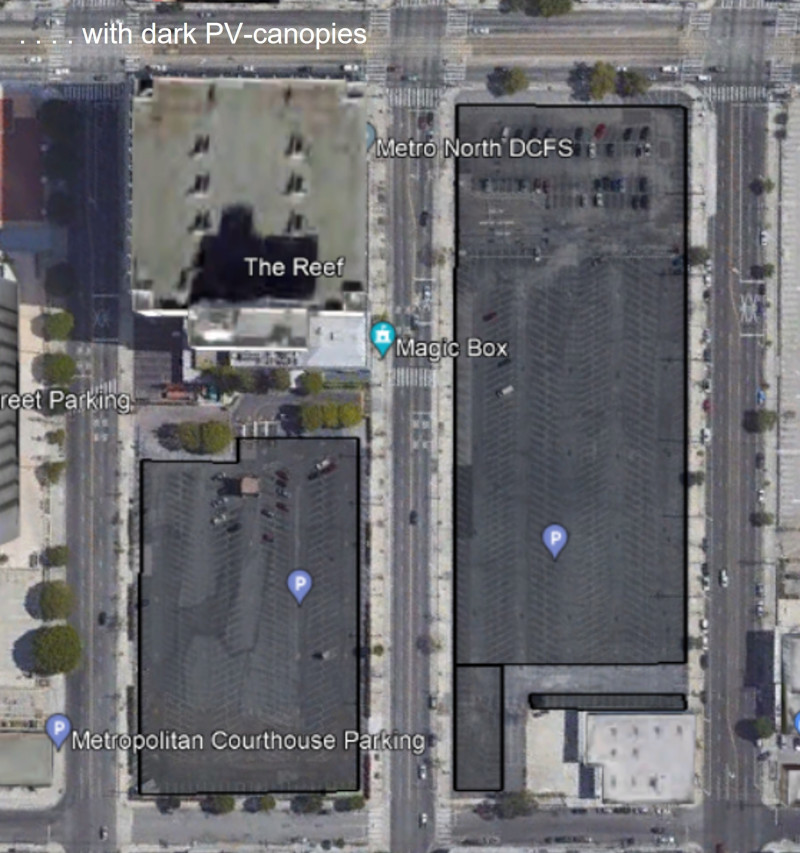
Bright surfaces, however, should be covered with white photovoltaics in a heavily sealed city such as Los Angeles - be it bright roofs or even bright parking lots
Areas that are bright (be it in the nature or in the city) have a positive Albedo-effect. It is unwise to turn them into black surfaces (at least not on a larger scale) because that would lead to regional warming – not due to CO2 but due to dark surfaces being heated up.


Although the efficiency of white photovoltaics is only 55% compared to that of black PV modules, white PV can still generate a total of around 250 GWh of electricity along the bridges in Los Angeles.


Los Angeles County consumes 65 TWh of electricity per year. If one wanted to produce this amount with photovoltaics, it is estimated that more than 400 square kilometers of area would have to be covered with them - which would lead to a noticeable deterioration of the Albedo effect in California. Therefore, about 15% of the areas along the bridges were planned with white PV modules as part of this concept.

In order to climatically upgrade areas that are currently sealed in black, entire areas can be deliberately equipped with white photovoltaics.
Even if this is not directly noticeable in individual cases, it is important in the aggregate for a heavily sealed city like Los Angeles to counteract a deterioration of the urban climate.
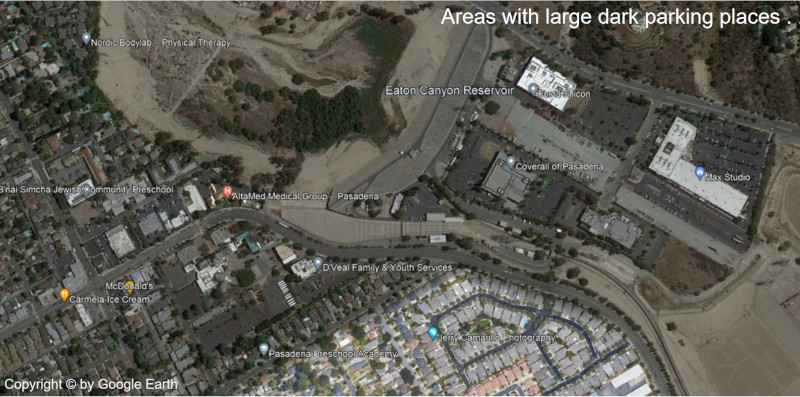

White photovoltaics are also more aesthetically pleasing - which is why they should be increasingly used in tourist locations such as LA's beautiful beaches: In the present concept, all parking spaces on the beach are accordingly covered with white PV modules
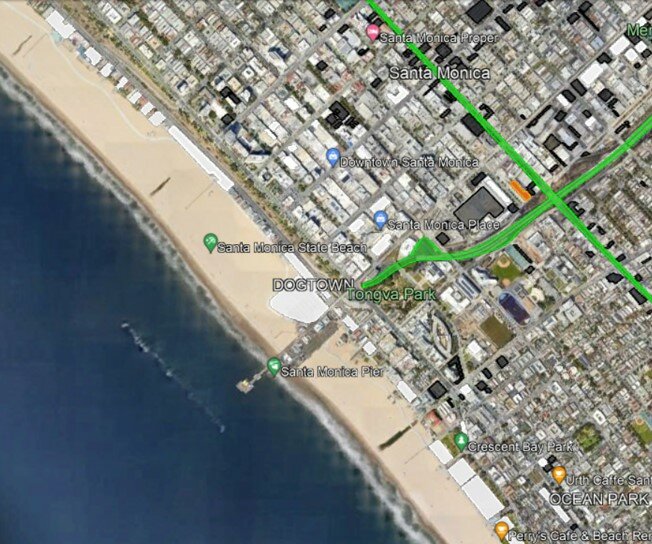

The same applies to the boat harbour in Marina del Rey: here, too, in the present concept, the canopy-roofing around the harbour and on the jetties is made exclusively out of white photovoltaic modules

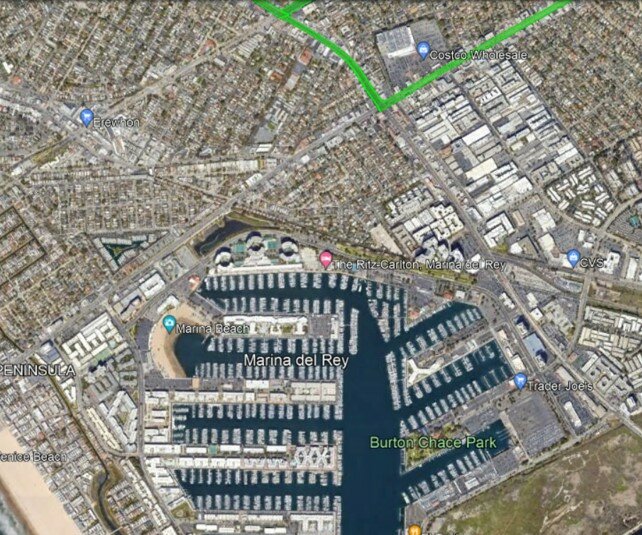
Not only areas directly at the bridges can be connected to the bridge energy grid: The connection is also worthwhile for more distant areas
Electricity supply networks have grown over decades and, as things stand today, function in one direction all over the world: a central supplier generates electricity and sends it to decentralized consumers. If you suddenly have a large number of decentralized consumers that are also temporary producers, the existing power grid and its control units are not designed for this: A new infrastructure is needed. Since it is not possible to tear up every street to lay new power lines, this can only be done efficiently if the decentralized generation areas are located along new lines that are connected to the LA Bridge Network.

In total, the PV areas of the LA Bridge system and the California Energy Bands connected to it can generate around 10 TWh of electricity per year.
There are a lot of suitable areas in Los Angeles for the photovoltaic generation of electricity: But without a grid structure, as it is created with the LA Bridges and Energy Bands, the resulting large amounts of volatile energy would not be controllable in the existing grid system and would also not be efficiently usable without appropriate storage options.
Roof areas next to bridges were only considered if they were larger than 1000sqm.
No roof areas were considered along the Energy Bands.
If all PV-capable areas along the LA Bridges and Energy-Bands were taken into account, a further 5 TWh of electricity p.a. could be generated - albeit with much smaller-scale PV systems.
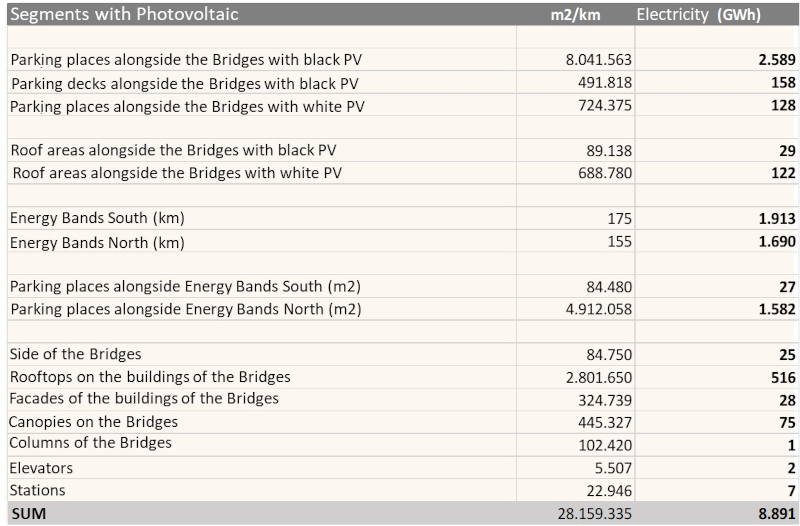
The storage of energy surpluses for the night and days with little sunshine can be carried out in underground hydrogen storage facilities or with hydroelectric power plants
In the future, the storage of excess electricity will take place in many different ways: Batteries of e-cars can function as decentralized storages, or else larger, lithium-free Reddox batteries can be used. However, the bulk of the energy will require extremely large, infrastructural storage. For the LA Bridges and the California Energy Bands, it is necessary to examine where along their course it is possible to locate underground hydrogen storage: Open space such as farmland that can be restored and used after the hydrogen storage facilities are installed is particularly suitable. However, water dams can also be extended to generate additional energy. From the multitude of possibilities and localities, the ones have to be selected that require the least effort and are most compatible with the environment.

Los Angeles, like all of California, suffers from drought and wildfires, especially since it imports about half of its water from other parts of the country
In California there have been intensive efforts for years to improve the water situation: Rainwater is collected in canals and directed into water reservoirs; large water treatment plants purify wastewater so that, after appropriate filtering stages, it becomes drinking water again or enriches groundwater bodies through infiltration; and desalination plants are also an important part of the water supply in California.
In spite of all efforts, Los Angeles has to appeal to its inhabitants every year to use the precious resource water even more sparingly. Actually, a relatively large amount of precipitation falls in Los Angeles City (approx. 360 mm p.a. - Frankfurt has 600 mm p.a. in comparison): But unfortunately, most of it falls on sealed surfaces and evaporates from there.


The more than 9 million square meter of bridge surface area in Los Angeles is covered by around 3.4 million cubic metres of water per year - at least 1 million of which can be transported by a ring main (to be installed below the LA Bridges) to water reservoirs: existing ones and, if necessary, new ones to be created
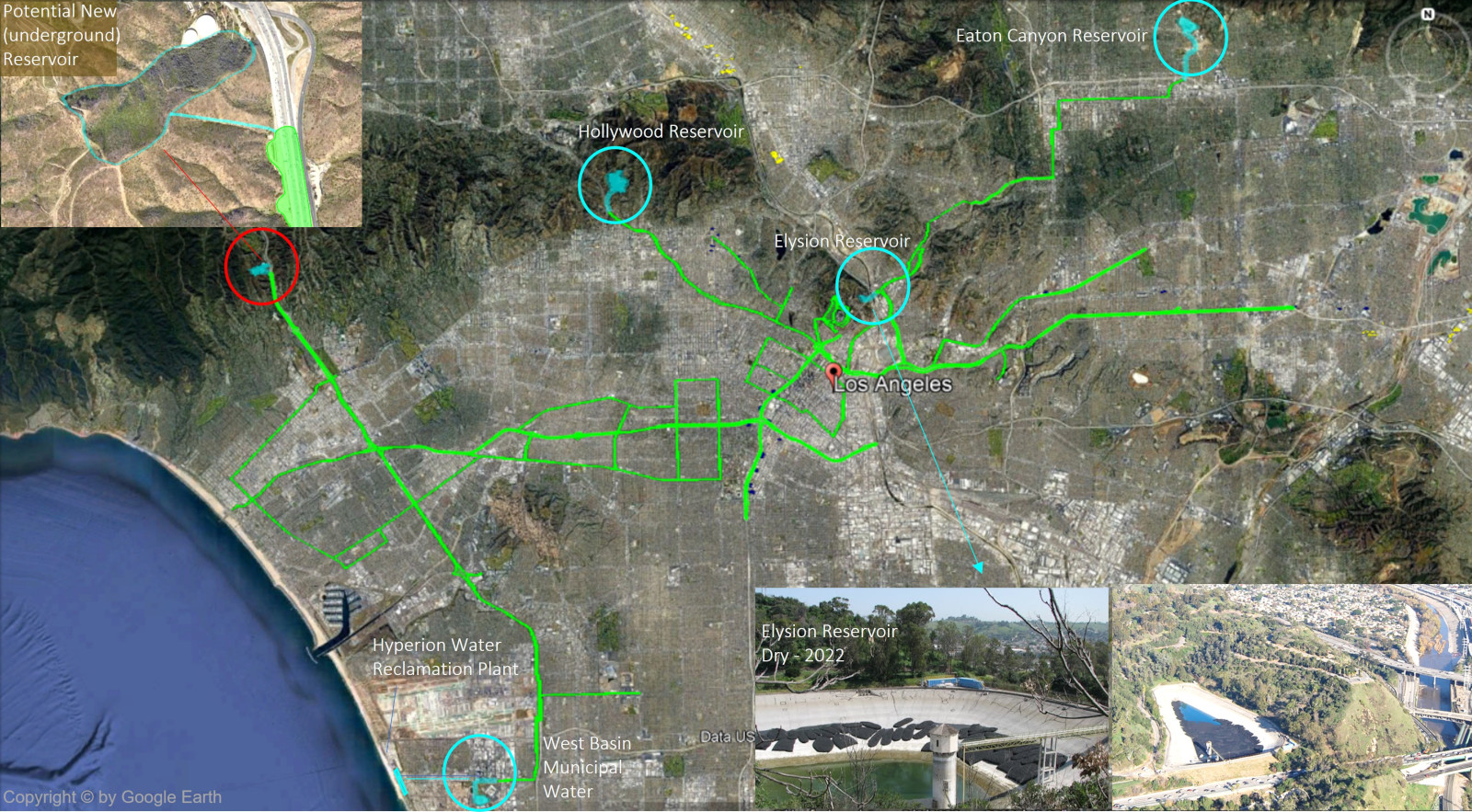
For new reservoirs, the Singapore concept of "floating photovoltaic on reservoirs" should be tested as evaporation protection instead of the currently used shade-balls
Shade balls are supposed to protect against the development of harmful bromide and chlorine compounds under UV light, but also to protect against evaporation: the shade balls are supposed to save around 1 million m3 of water per year. But their production is energy-, resource- and water-intensive, and it is still untested whether they emit microplastics over time. A dense covering with photovoltaics, on the other hand, is at least sustainable due to the energy generated at the same time and should have a better ecological balance.



Conclusion: Los Angeles can use the bridges to create attractive neighborhoods that solve infrastructural and social problems today, while being extremely lucrative real estate investments for the future
On the LA Bridges, green quarters are being created that are architecturally fascinating and permeated with artistic life: an urban space on the second level that offers a life almost without cars and can help to improve all the neighbouring districts.
15 million square meters of building space can be created on the bridges, 12 million of which could be used as living space for 340,000 people, while educational facilities, shops, spaces for art and culture, and social institutions can be built on the remaining 3 million square meters of space. Los Angeles will have the opportunity to significantly upgrade its city center.
Financed by private investors, some parts of the bridge should nevertheless be used to solve social problems and homelessness. The innovative approach is: Neighborhoods that offer social housing on the LA bridges today should be directly created as cool and at the same time as beautifully planted urban areas, and thus be prepared for later gentrification (i.e. an attractive return on investment) - even if these entire neighborhoods only become the property of the investing owners a generation later (i.e. in 30 years), and are used exclusively for social purposes beforehand. The main advantage of this is that the socially disadvantaged are not ghettoized but, on the contrary, are housed in exciting and popular neighborhoods.
The LA Bridges can also simultaneously serve as a new grid for the collection, storage, and redistribution of photovoltaically generated electricity, regardless of their construction: 3.5 TWh of electricity can be generated by the bridge PV and the photovoltaic areas adjacent to them, with an additional 6.5 TWh coming from the California Energy Bands that connect to them.
1 million cubic meters of rainwater can be collected by the LA Bridges and transported to storage locations. If, following the example of the Frankfurt Bridges, water cisterns are installed in the ground at the large parking lot areas that are provided with PV canopies, into which the rainwater from these canopies is fed and which release it into the bridge pipeline, then several hundred cubic meters of water are added, which can be processed into drinking water and distributed again.
Conclusion: With the help of the LA Bridges, Los Angeles can offer its citizens a better quality of life and at the same time become the sustainable city of the future.